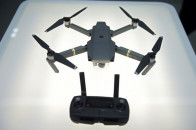China's 3D-printed miniature turbojet engine completes flight test
The engine powered a drone for 30 minutes, reaching 6,000 m altitude and Mach 0.75 with stable performance

A domestically developed ultra-lightweight miniature turbojet engine, which was primarily manufactured using 3D printing technology, has successfully completed its first single-engine flight test, the Aero Engine Corporation of China (AECC) said on Thursday.
During the test, the engine powered a target drone for a 30-minute flight, reaching an altitude of 6,000 meters and a speed of Mach 0.75. The engine operated normally and stably throughout the flight.
This achievement is a further milestone for the engine, following its initial captive-carry flight test in July this year. The successful single-engine flight test has further validated the engine's reliability at higher altitudes and in more complex environments, tested its compatibility with the aircraft, and demonstrated promising application prospects.
Read More: Why I chose China for my Master's degree
The engine is China's first 3D-printed, ultra-lightweight miniature turbojet engine in the 160-kilogram thrust class to complete a flight test. It utilizes a multi-disciplinary topology optimization design and 3D printing technologies to achieve its lightweight and high-performance design goals, according to the AECC.
More than three-quarters of the engine's components by weight were manufactured using 3D printing, significantly reducing the part count and achieving the design goals of lightweight and high performance. This lays a solid foundation for future flights at higher altitudes and speeds, the report said.
Aso read: China improves sci-tech education in primary, middle schools
All rotating parts and components accounting for over three-quarters of the engine's total weight are 3D-printed. This approach has significantly reduced the engine's number of parts, lowered its weight, and simplified its operation and maintenance.
The successful flight test lays a foundation for future flights targeting higher altitudes and greater speeds. With the increasing application of design optimization and 3D printing technology in the aero-engine sector, the development cycle for future engines is expected to be shortened, thereby accelerating China's progress in its independent R&D and manufacturing of aviation propulsion systems.



















COMMENTS
Comments are moderated and generally will be posted if they are on-topic and not abusive.
For more information, please see our Comments FAQ